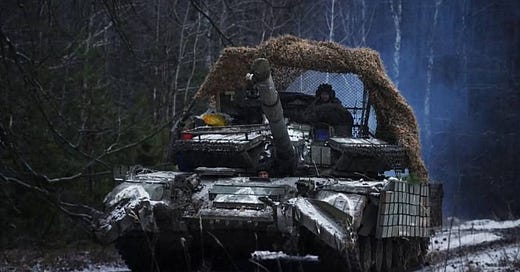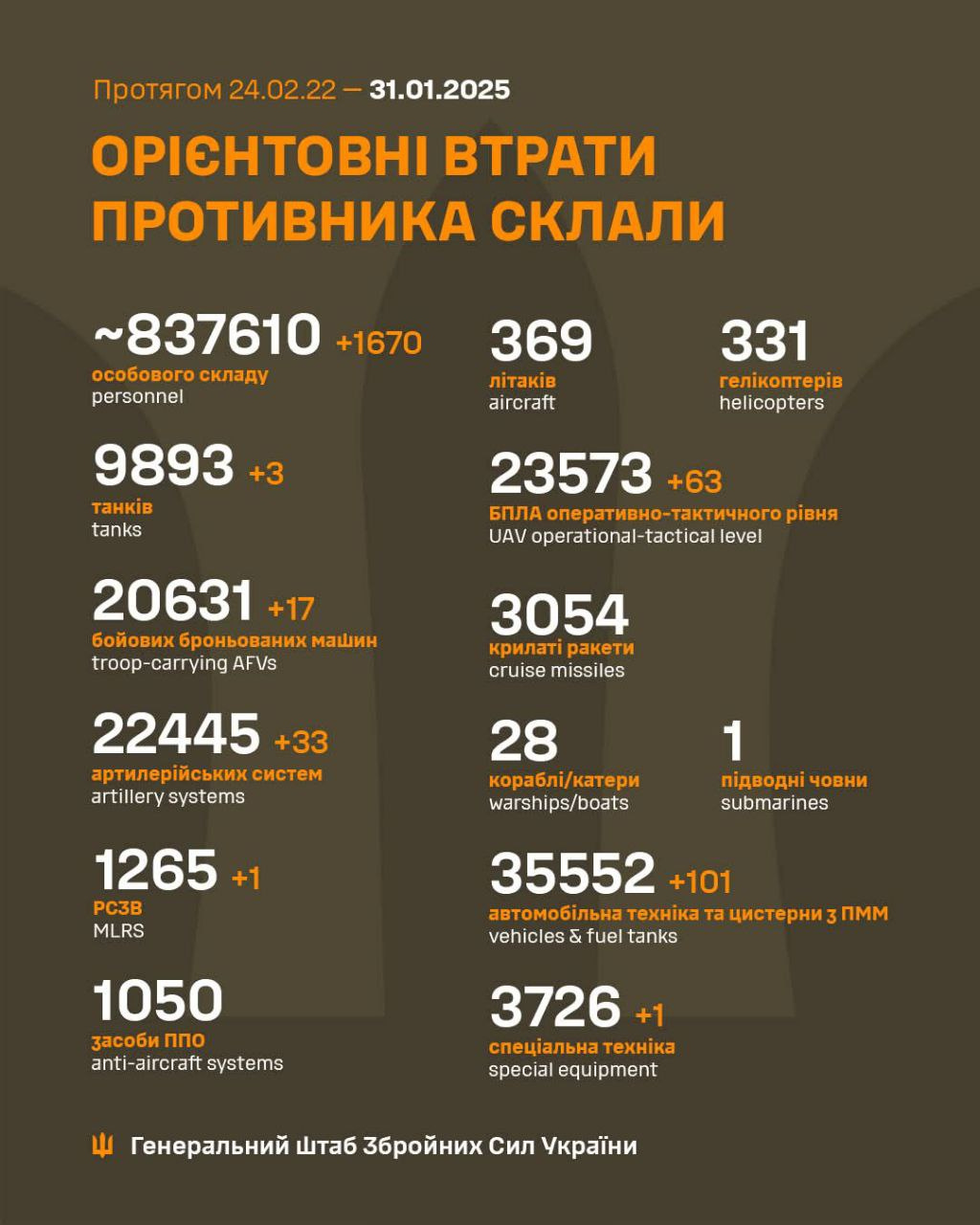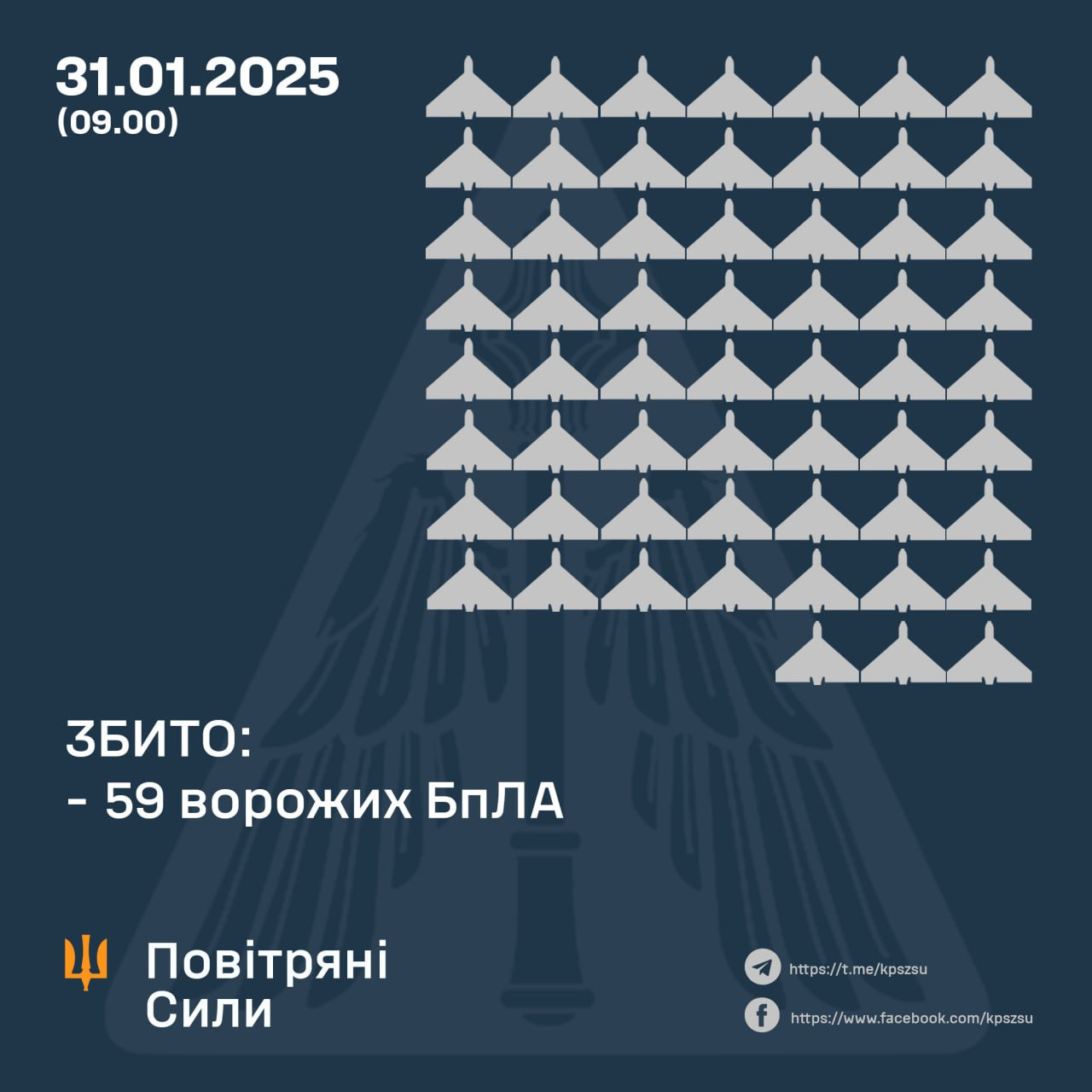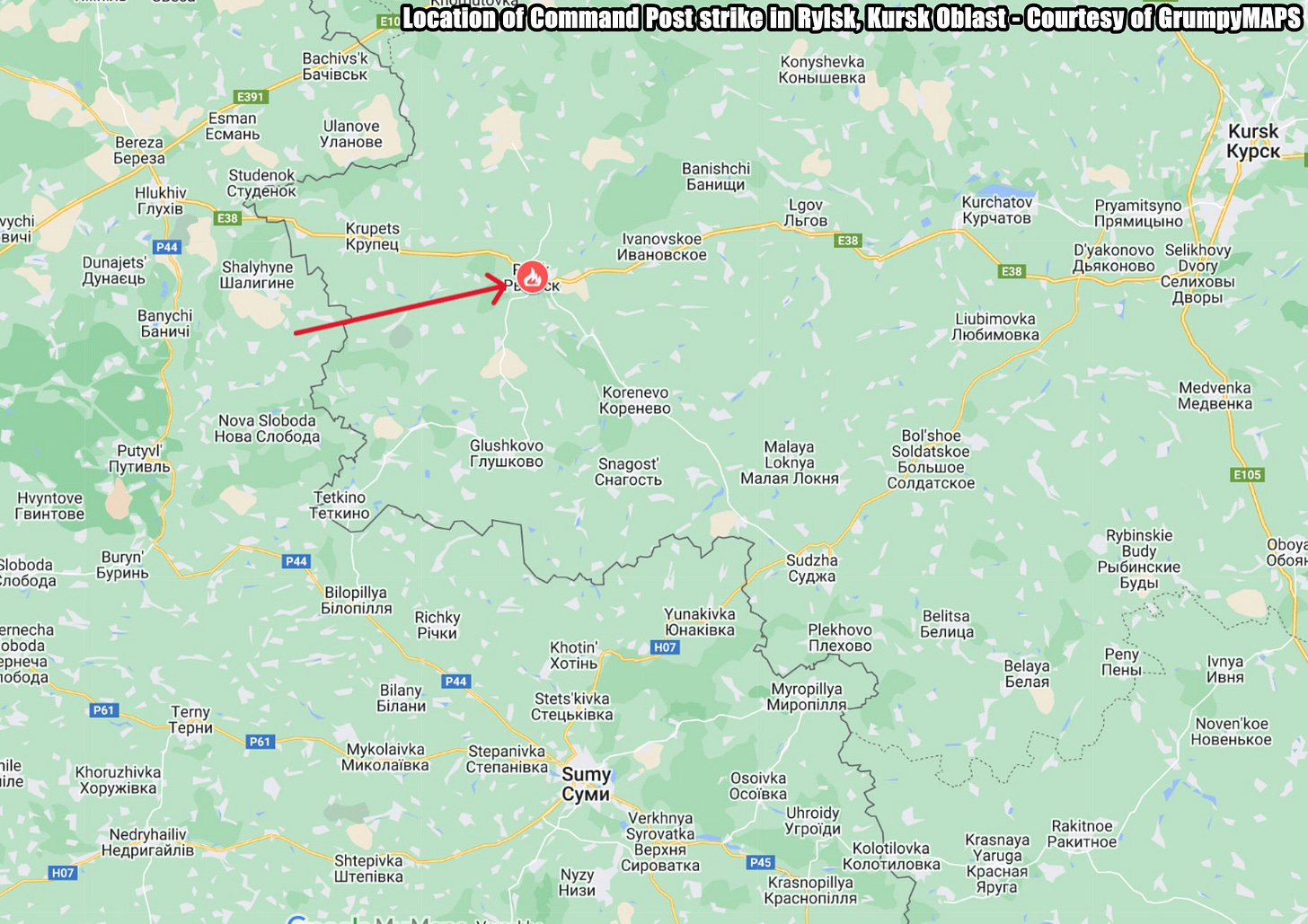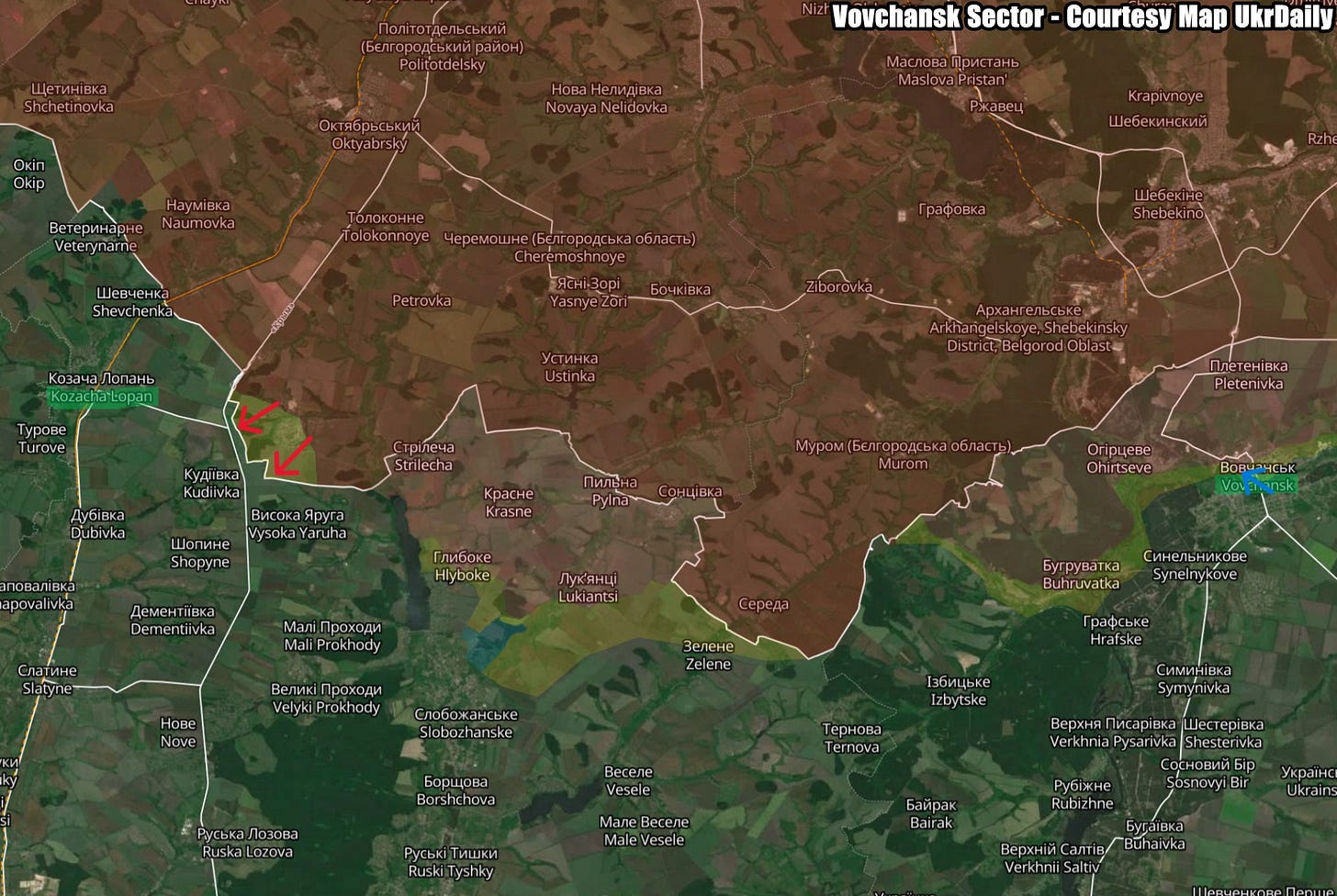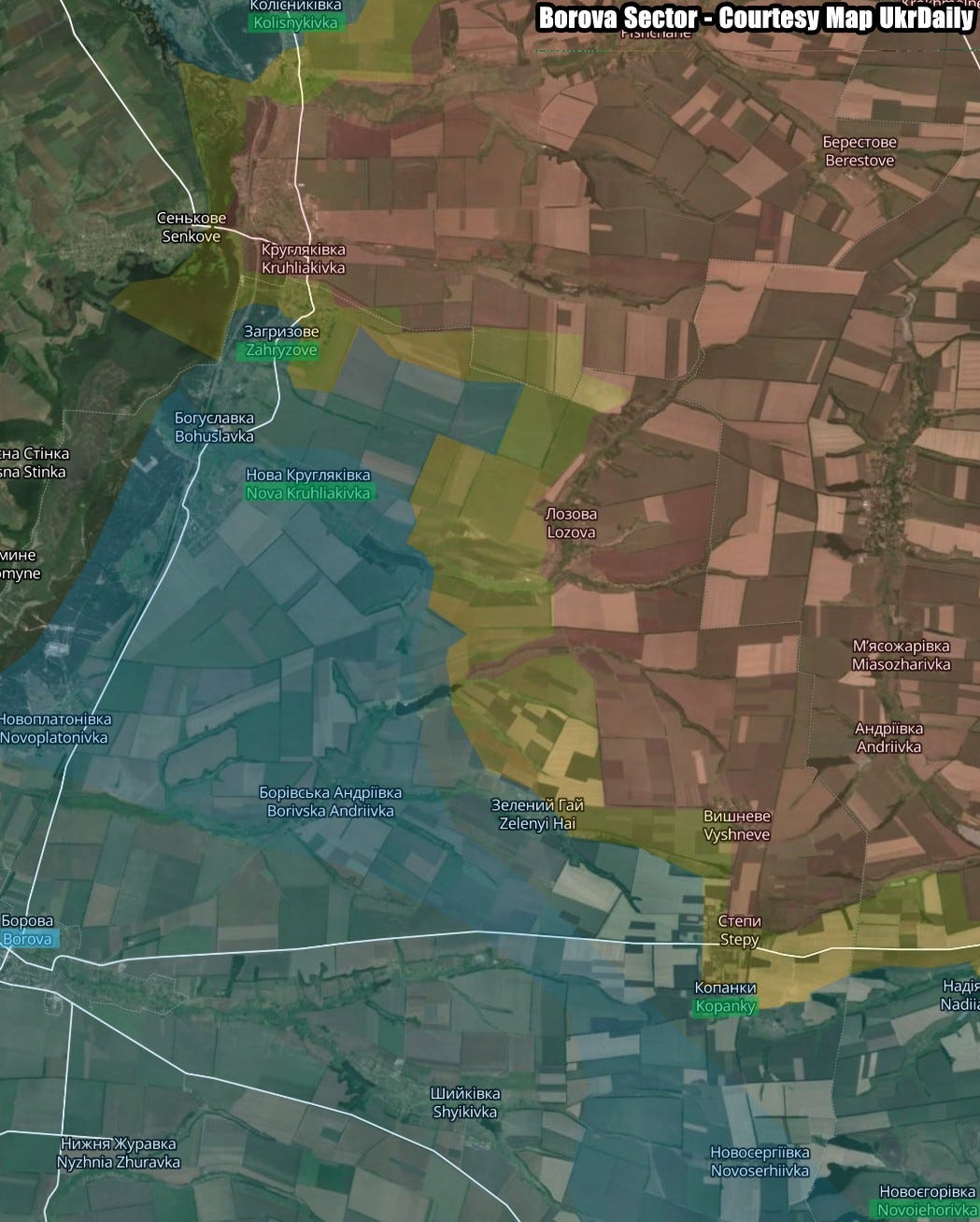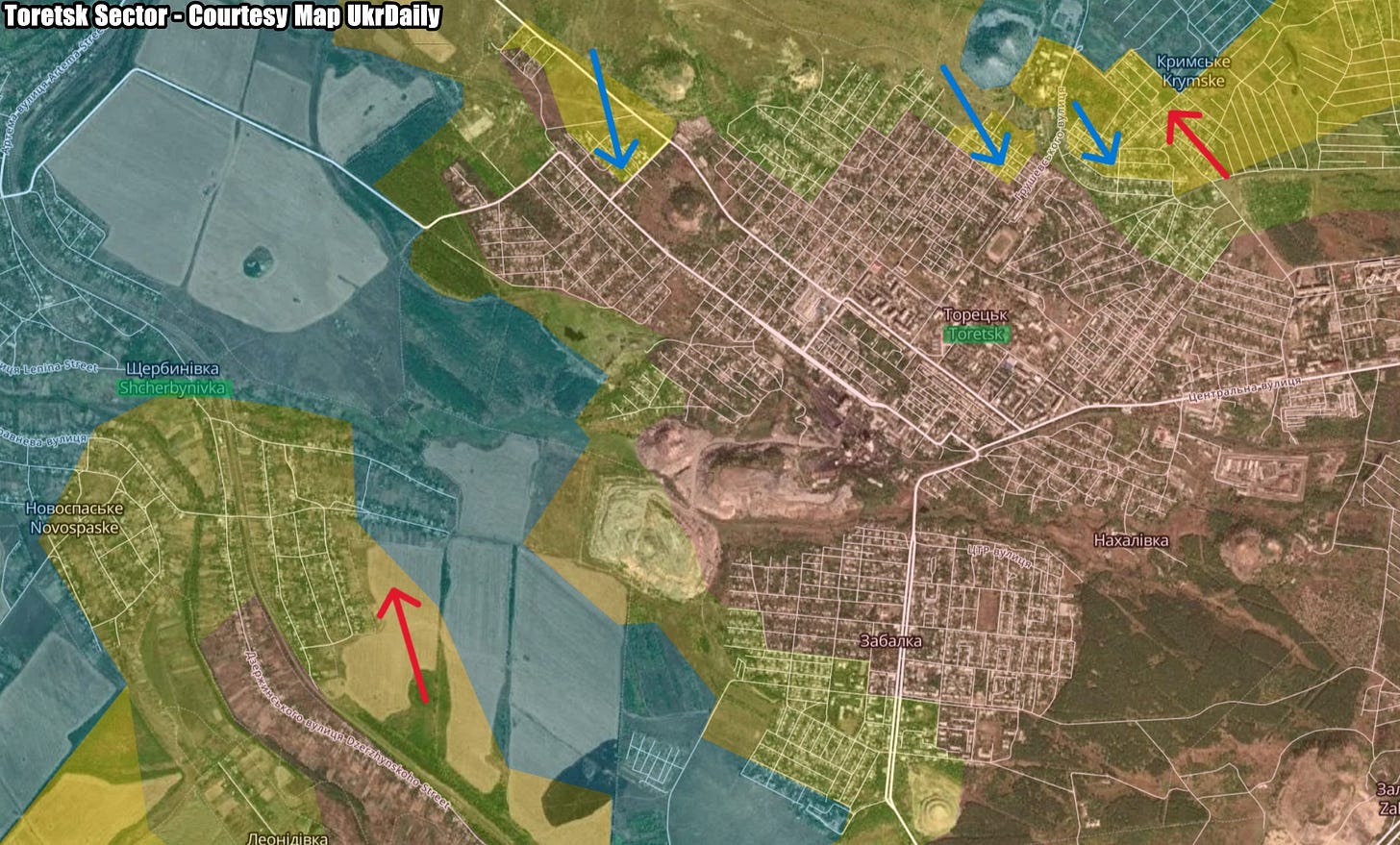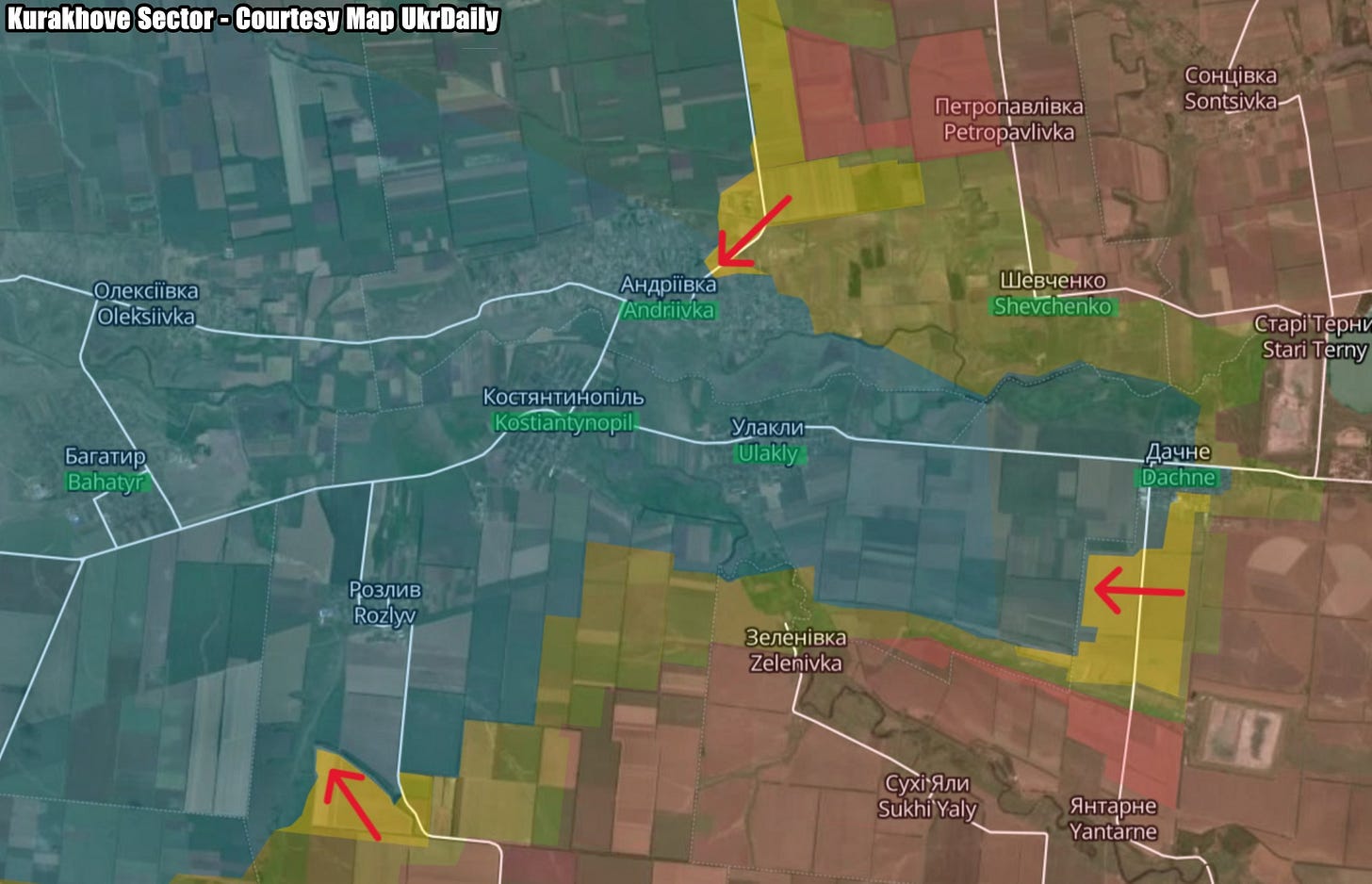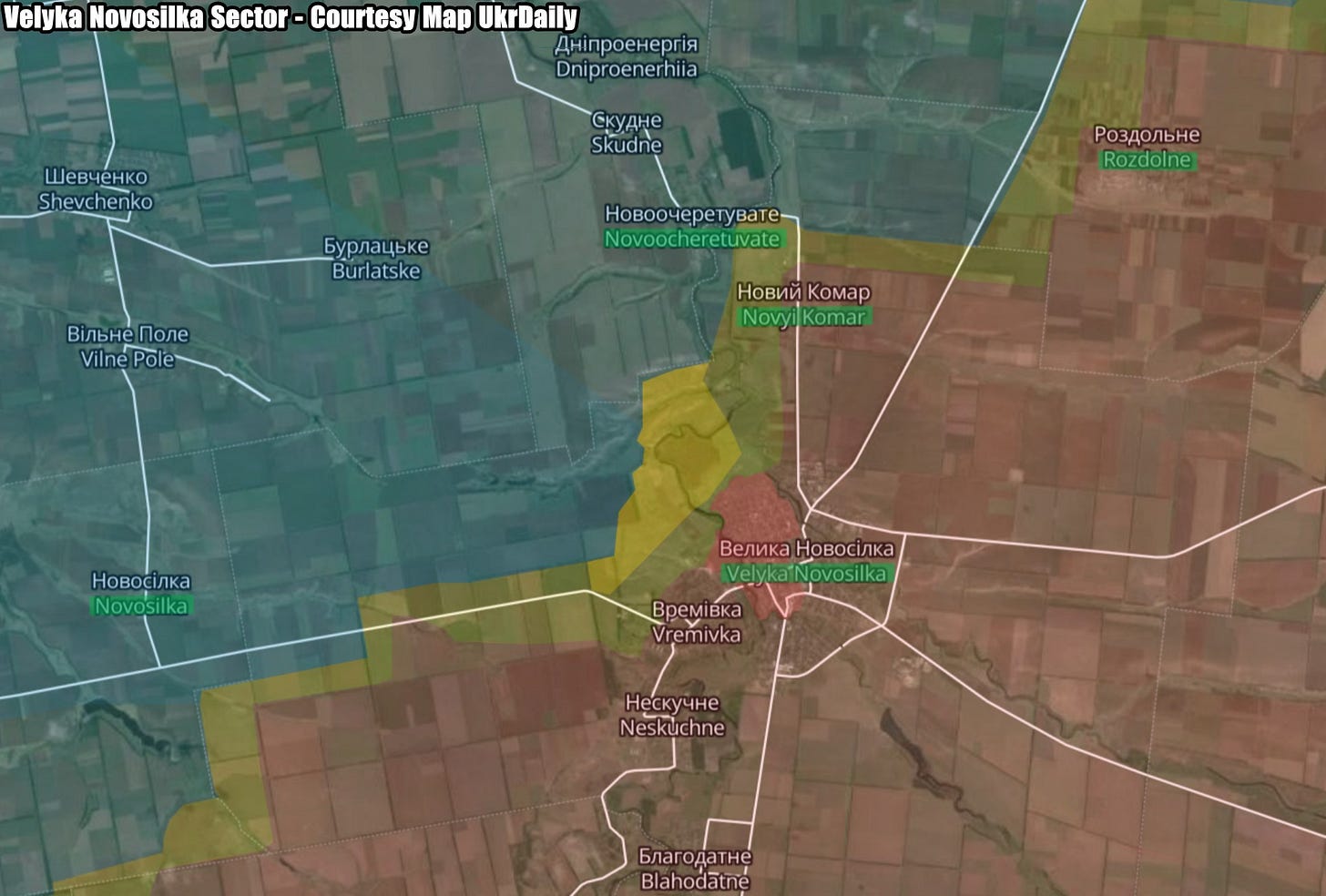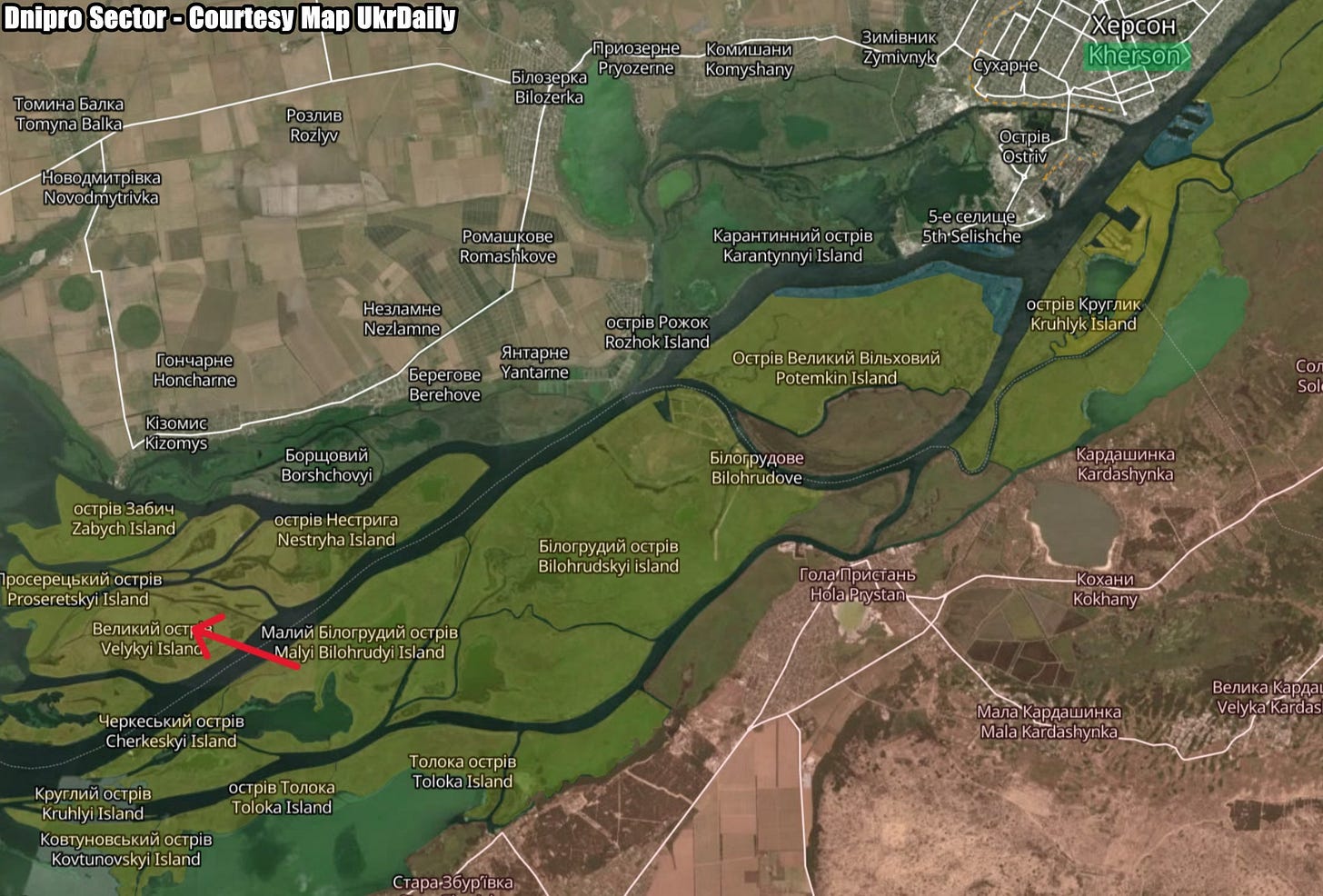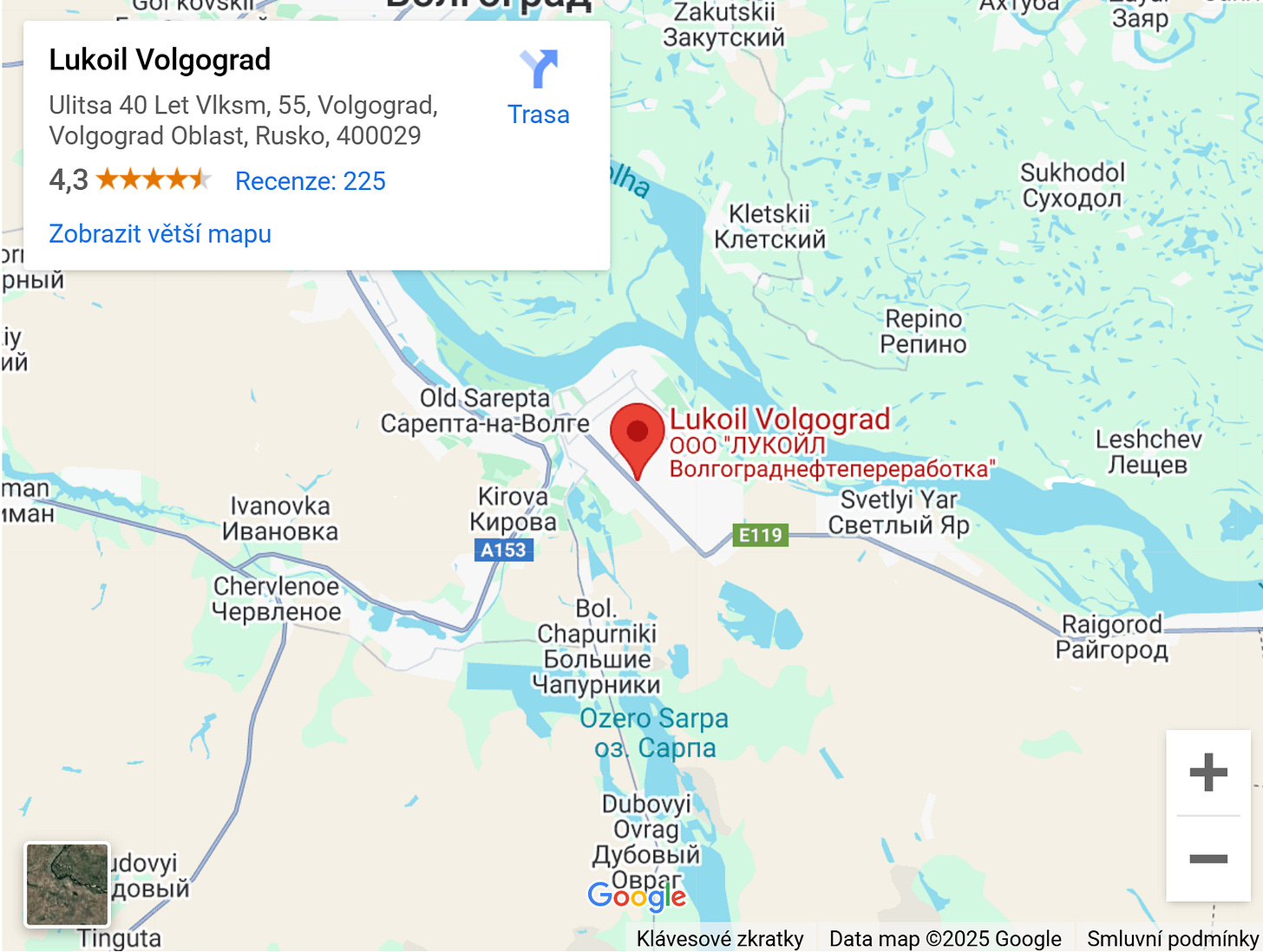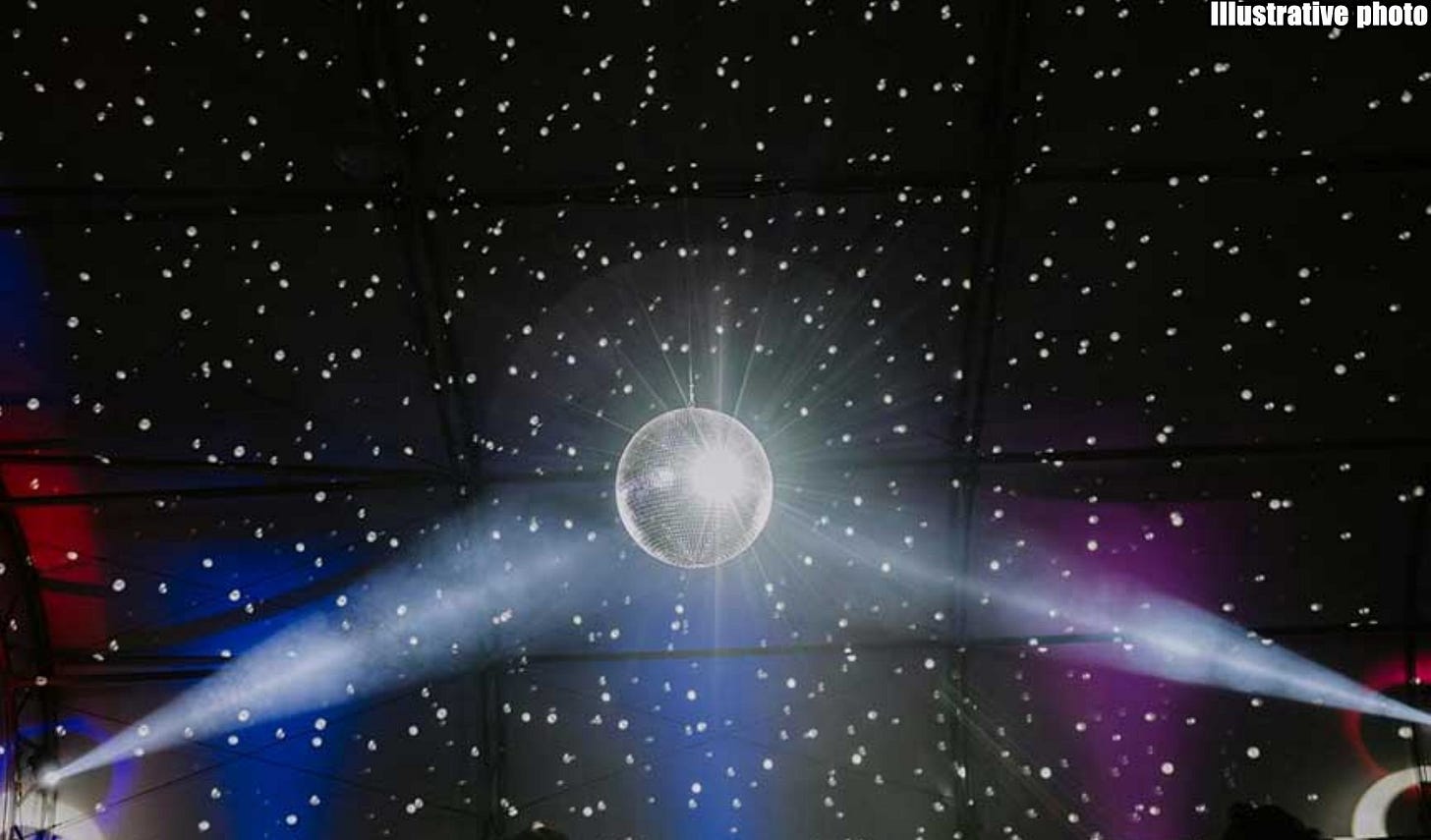Slava Ukraini! In early 2022 I began a Telegram channel aggregating news from a number of sources daily on the war in Ukraine. In June 2023 I began providing a daily draft for the Ukraine War Brief Podcast collecting news from over 70 sources daily, which formed the basis of the script. While the Podcast no longer exists I have continued to make this Brief available for my followers here on Substack for those who wish to keep up with the news from the war.
All the latest news on the Russo-Ukraine War 6 days per week
ALONG THE CONTACT LINE
GSAFU Morning Report
The General Staff of the Armed Forces of Ukraine in its Operational Information update at 08:00 on Jan 31 stated that day 1073 of the full-scale invasion of the Russian Federation against Ukraine had begun.
The situation on the line of combat remains tense in some sectors. Ukrainian defenders continue to actively counteract the Russian aggressor, causing them significant losses in personnel, equipment and technology. Exhausting the enemy along the entire front line and continuing to disrupt the plans of Russian occupiers to advance deeper into the territory of Ukraine.
During the past day, 150 combat engagements took place.
Over the past 24 hours, the enemy carried out 1 missile strike, 55 air strikes, used 2,767 drones and fired approximately 6,500 artillery shells across the positions of Ukrainian forces and civilians.
Air Force Daily Report
The General Staff of the Armed Forces of Ukraine in its Operational Information update at 08:00 on Jan 31 stated that day 1073 of the full-scale invasion of the Russian Federation against Ukraine had begun.
The situation on the line of combat remains tense in some sectors. Ukrainian defenders continue to actively counteract the Russian aggressor, causing them significant losses in personnel, equipment and technology. Exhausting the enemy along the entire front line and continuing to disrupt the plans of Russian occupiers to advance deeper into the territory of Ukraine.
During the past day, 150 combat engagements took place.
Over the past 24 hours, the enemy carried out 1 missile strike, 55 air strikes, used 2,767 drones and fired approximately 6,500 artillery shells across the positions of Ukrainian forces and civilians.
Combat Operations in the Kursk Sector, Russian Federation
The Institute for the Study of War (ISW), a US based think tank, in its Jan 30 Russian Offensive Campaign Assessment reported that Russian forces continued offensive operations within the Ukrainian salient in Kursk Oblast on Jan 30 but did not make any confirmed advances. Russian milbloggers claimed that Russian forces advanced northeast of Zhuravka along the Ukrainian-Russian international border, to fields northeast of Sverdlikovo (northwest of Sudzha), along the Ivnitsa River towards the 38H-071 highway (northeast of Malaya Loknya), and in unspecified locations in northern Sudzha Raion. ISW has not observed confirmation of these claims, however. Russian milbloggers claimed that Russian forces attacked northwest of Sudzha near Sverdlikovo and south of Sudzha near Guyevo and Makhnovka. Drone operators of the Russian 1434th ”Akhmat-Chechnya” Regiment are reportedly striking Ukrainian positions in the Sudzha direction; drone operators of the Russian 83rd Airborne (VDV) Brigade are reportedly striking Ukrainian soldiers in the Kursk direction; drone operators of the Russian 34th Motorized Rifle Brigade (49th Combined Arms Army [CAA], Southern Military District [SMD]) reportedly continue to strike Ukrainian positions in Pogrebki (northwest of Sudzha); and likely elements of the Russian 56th VDV Regiment (7th VDV Division) are reportedly operating near Sverdlikovo.
ISW previously geolocated footage on Jan 10 indicating that Russian forces crossed the international border and advanced west of Zhuravka and a Russian milblogger previously claimed that Russian forces crossed into Sumy Oblast in an effort to bypass Nikolayevo-Darino (east of Sudzha) from the south.
Ukraine destroys Russian command post in Kursk Oblast
Ukraine's Missile and Artillery Forces struck the command post of Russia's Kursk group of forces in the Russian city of Rylsk in Kursk Oblast on Jan. 31, the General Staff of Ukraine's Armed Forces reported.
"As a result of the coordinated and precision strike, (Russia's) command and control post was destroyed," the statement read. Local Russian Telegram channels also reported explosions in the Rylsk district.
The attack is part of Ukraine's broader strategy to weaken Russian operational capabilities by targeting key command centers. The General Staff emphasized that such strikes aim to reduce Russia's offensive potential.
The strike follows Kyiv's limited incursion into Kursk Oblast on Aug. 6, 2024, when Ukrainian forces temporarily captured about 1,300 square kilometers (500 square miles) of Russian territory. While Ukraine has reportedly lost around half of that territory since then, fighting continues in the region.
The Khortytsia operational-strategic group
(Responsible for the northeastern part of Ukraine. )
Kharkiv Sector: Ukrainian forces recently advanced northeast of Kharkiv City amid ongoing Russian offensive operations in northern Kharkiv Oblast on Jan 30. Geolocated footage published on Jan 30 indicates that Ukrainian forces recently marginally advanced in northern Vovchansk (northeast of Kharkiv City). Russian forces continued assaults near Kozacha Lopan (north of Kharkiv City along the Russia-Ukraine international border) on Jan 29 and 30
Borova Sector: Russian forces continued attacking northeast of Borova near Nova Kruhlyakivka, Lozova, Zahryzove, Kolisnykivka, and Novoosynove; east of Borova near Kopanky; and southeast of Borova near Makiivka, Nevske, and Novoyehorivka on Jan 29 and 30.
Chasiv Yar Sector: Russian forces recently advanced in the Chasiv Yar direction amid continued Russian offensive operations in the area on Jan 30. Geolocated footage published on Jan 29 indicates that Russian forces recently advanced along Dniprovska Street in central Chasiv Yar.
Toretsk Sector: Russian forces recently advanced in Toretsk amid continued offensive operations on Jan 30. Geolocated footage published on Jan 30 indicates that Russian forces recently advanced in the industrial area in northern Toretsk. Russian forces continued ground attacks in Toretsk, north of Toretsk near Krymske, and west of Toretsk near Shcherbynivka on Jan 29 and 30.
The spokesperson of a Ukrainian brigade operating in the Toretsk direction reported on Jan 30 that Ukrainian forces recaptured lost positions near Krymske (north of Toretsk). The spokesperson reported that Ukrainian strikes are constraining Russian forces’ ability to operate armored vehicles near Toretsk and regularly destroying the equipment as Russian forces approach Ukrainian positions. He added that Ukrainian forces have observed Russian forces operating in smaller assault units comprised of three or four troops and are conducting assaults in multiple waves of these small teams.
The Tavria operational-strategic group
(Responsible for the central-eastern and southeastern part of Ukraine.)
Pokrovsk Sector : Ukrainian forces recently advanced southwest of Pokrovsk amid ongoing Russian offensive operations in the area on Jan 30. Geolocated footage published on Jan 29 indicates that Ukrainian forces recently marginally advanced west of Novoandriivka (southwest of Pokrovsk). Russian milbloggers claimed that Ukrainian forces also counterattacked near Nadiivka (north of Novoandriivka). The spokesperson of a Ukrainian National Guard brigade reported that Russian forces are exclusively conducting infantry assaults with limited vehicle support and that Ukrainian drones continue to be the most effective weapon to repel Russian assaults in the Pokrovsk direction.
Kurakhove Sector: Russian forces recently advanced in the Kurakhove direction amid continued offensive operations on Jan 30. Geolocated footage published on Jan 25 indicates that Russian forces advanced in a field up to the eastern outskirts of Andriivka (northwest of Kurakhove).
Russian forces attacked northwest of Kurakhove near Andriivka and Shevchenko; west of Kurakhove near Dachne, Kostyantynopil, and Ulakly; and southwest of Kurakhove towards Bahatyr on Jan 29 and 30.
Velyka Novosilka Sector: Russian forces attacked northwest of Velyka Novosilka near Novoocheretuvate, north of Velyka Novosilka near Novyi Komar, northeast of Velyka Novosilka near Rozdolne, and southwest of Velyka Novosilka near Novosilka on Jan 29 and 30 but did not make confirmed advances.
The Odesa operational-strategic group
(Responsible for Kherson, Qırım, (also known as Crimea) and the Black Sea.)
Dnipro Sector: Russian forces recently advanced in the Dnipro direction amid continued offensive operations in the area on January 30. Geolocated footage published on January 29 indicates that Russian forces recently seized the Velykyi Sokolin Island (southeast of Kherson City).
TEMPORARILY OCCUPIED TERRITORIES
Nothing major to report.
THE HOME FRONT
Defence Ministry fires Arms Procurement chief Bezrukova.
Maryna Bezrukova, head of Ukraine's Defense Procurement Agency (DPA), has been officially dismissed over "failure to meet delivery plans and other violations," the Kyiv Independent reports citing an announcement from the Defense Ministry on Jan. 31.
Her firing follows a week of escalating tensions between the ministry and the DPA. Defense Minister Rustem Umerov suspended Bezrukova on Jan. 24, appointing Arsen Zhumadilov as temporary director, despite the agency's supervisory board voting to extend her contract days earlier.
The Defense Ministry cited several reasons for her removal, including alleged failure to fulfill planned deliveries for the front, poor procurement planning and delays, lack of timely communication with the General Staff, and leaks of classified information, which are reportedly expected to be investigated.
Hours before her firing, Bezrukova posted on Facebook that she asked President Volodymyr Zelenskyy to prevent the "destruction" of the agency. She warned that further disruptions would harm military supplies and erode donor and partner trust.
Umerov's decision to fire Bezrukova sparked backlash, as Ukrainian law grants supervisory boards the sole authority to appoint or dismiss state enterprise heads. The Anti-Corruption Action Center (ANTAC) accused the Defense Ministry of a "hostile takeover," alleging it manipulated the state enterprise register to "legitimize" Zhumadilov's appointment.
The Justice Ministry confirmed that Bezrukova was initially removed from the register as director on Jan. 25, with Zhumadilov listed as the new director. Her name was later restored, but with the designation of "suspended director," while Zhumadilov remained listed as "temporary director."
On Jan. 27, G7 ambassadors urged a swift resolution, stressing the need to maintain uninterrupted arms procurement. The National Anti-Corruption Bureau of Ukraine (NABU) launched an investigation on Jan. 28 into potential abuse of power by Umerov.
RUSSIAN WORLD
Ukraine attacks large Russian oil refinery in Volgorad
Ukrainian drones attacked an oil refinery owned by Lukoil, one of Russia's largest oil producers, in Volgograd Oblast overnight on Jan. 31, the General Staff of Ukraine's Armed Forces reported.
"This refinery is one of the 10 largest oil refineries in Russia in terms of design capacity and is involved in supplying the Russian occupation army," the General Staff said in a statement.
The Lukoil-Volgogradneftepererabotka refinery was targeted in a joint operation of the Unmanned Systems Forces and Ukraine's military intelligence agency (HUR). It lies around 500 kilometers (300 miles) from the front line in Ukraine.
Flashes and explosions were recorded near the plant, though the extent of the damage is still being assessed, the military said. The Lukoil refinery in Volgograd Oblast has been targeted multiple times during the war, including in February, July, and September 2023.
"The refinery produces gasoline, diesel fuel, fuel oil, and aviation fuel," Andrii Kovalenko, head of the counter-disinformation department at Ukraine's National Security and Defense Council, said.
Russia's Defense Ministry claimed its air defenses shot down 49 Ukrainian drones overnight, including 25 in Rostov Oblast, eight in Volgograd Oblast, six in Kursk Oblast, and four in Yaroslav Oblast. Two drones each were reportedly destroyed over Krasnodar Krai, Voronezh, and Belgorod oblasts.
Ukraine has increasingly targeted Russian energy infrastructure, including oil refineries and fuel depots, to disrupt supplies to Russian forces. The strikes are part of a broader strategy to weaken Russia's military logistics and economic resilience amid the ongoing war.
In particular, Kyiv has stepped up long-range attacks this winter. Recent drone strikes hit a refinery in Ryazan, a distillery in Tambov Oblast, and a chemical plant in Bryansk. The Ryazan Oil Refinery, one of Russia's largest, later suspended operations due to the damage.
Russian Education Ministry official calls for bringing back school discos to boost country’s birthrate.
Russian schools need to hold more “romantic” events, including school discos, to encourage teenagers to start families, Education Ministry official Natalia Agre said at a State Duma roundtable discussion titled “From Population Preservation to Population Growth” on Thursday. Meduza reports citing her comments to Agentstvo Media.
We organize a lot of serious and important events — understandably, given the ongoing special military operation — but where is the romance for children? […] Where are out school discos? Only eight percent of young people aged 18 to 21 see themselves in family life. That’s very little. And why is that? Because we haven’t created the conditions for romantic relationships.
Agre, who serves as the director of the Education Ministry’s Department of State Policy in the Field of Upbringing, Additional Education, and Children’s Recreation, also promised to work with her colleagues to “place greater emphasis on shaping proper relationships between the sexes before they enter adulthood.”
The roundtable event was part of an official discussion among lawmakers on ways to achieve the targets set by Vladimir Putin last May, when he issued a decree stating that the Russian birthrate should reach 1.6 by 2030 and 1.8 by 2036. It currently stands at 1.4.
INTERNATIONAL NEWS
Norway detains Russian-crewed vessel over undersea cable damage suspicion.
Norwegian authorities detained the Silver Dania vessel with a Russian crew on Jan. 30 on suspicion of it damaging an undersea fiber-optic cable linking Latvia and Sweden, the Kyiv Independent reported citing a Norwegian police announcement.
The vessel, which operates under the Norwegian flag and travels between St. Petersburg and Murmansk, was seized in Tromso at Latvia's request following a local court order. The police are searching the ship and questioning the crew.
The damaged cable is one of several recent incidents in the Baltic Sea that are being investigated as possible acts of sabotage.
The Latvian State Radio and Television Broadcasting Center (LVRTC) reported on Jan. 26 that an external impact had significantly damaged the underwater cable. While data transmission services were rerouted to alternative pathways, some users in Latvia experienced slower speeds.
A previous case on Dec. 25 saw the destruction of four telecommunication cables and a power cable, with Finnish authorities suspecting a Russian "shadow fleet" vessel was involved. These ships are used to bypass sanctions on Russian oil exports.
In response to the incidents, NATO has dispatched additional patrol ships to the region to safeguard critical infrastructure. While intelligence services in the U.S. and Europe increasingly suspect the damage may be due to maritime accidents rather than deliberate sabotage, investigations remain ongoing.
Concerns over Russian hybrid warfare tactics persist, particularly as suspicious activities involving Russian-registered vessels near Denmark and Sweden continue to raise alarms in the region.
China is Russia's sole supplier of key military-use rare metals amid sanctions.
China has become Russia's sole supplier of gallium, germanium, and stibium, chemical substances needed to produce weapons, including nuclear ones, after the introduction of EU and U.S. sanctions in 2022, Radio Free Europe/Radio Liberty's (RFE/RL) Schemes' investigation reported on Jan. 30.
Ukraine's Western partners have imposed heavy sanctions against Russia after the outbreak of the full-scale war in 2022 to cut off key supply lines of the Russian defense industry.
As Russia's options to purchase gallium and germanium from around the world almost disappeared, China became the sole supplier in 2023, the investigation said, citing leaked data from Russian customs databases.
Stibium is reportedly supplied to Russia only from China and the United Arab Emirates, two countries that are not part of the sanctions coalition.
Beijing repeatedly denied supplying components for Russian military production, but the investigation revealed links between Chinese state-owned companies and Russian enterprises working for the Russian army.
Of the nearly 20 Chinese companies exporting these metals to Russia, one-third are state-owned.
One of the key suppliers of germanium is the Chinese Yunnan Lincang Xinyuan Germanium Industry, in which Bao Wendong, a member of the Chinese Communist Party, holds a share of ownership. The rest of the shares are held by companies with state capital, Schemes wrote.
Its products are reportedly purchased by companies affiliated with Rostec, the Russian state-owned arms manufacturer, including factories that produce optical systems for military equipment.
Vital Technology Group is another Chinese company that supplies gallium, germanium, and stibium. Russia's Ferrotek Nord purchases its products, which in turn cooperates with Angstrom, a supplier of microchips to the Russian Defense Ministry.
Chinese gallium is also used in the production of nuclear weapons, as this metal stabilizes plutonium bombs. Russia's Kurchatov Institute, which is engaged in nuclear development, has been purchasing products containing gallium through Cryotrade Engineering. According to the investigation, the company buys gallium from the Chinese Hynhe Technology Co. Ltd.
China has deepened its ties with Russia since the start of the Kremlin's full-scale war against Ukraine and has become Moscow's leading source of dual-use goods that feed the Russian defense industry.
Beijing has also sought to position itself as a mediator between Russia and Ukraine, sending envoy Li Hui on multiple rounds of shuttle diplomacy in Europe. At the same time, China has criticized the U.S. and its allies for "exacerbating" the war by supplying arms to Ukraine, while NATO has named Beijing a "decisive enabler" of Russia's war.
Explosion at Rheinmetall plant in Spain leaves 6 injured.
Six people were injured in an explosion at a warehouse of the German arms manufacturer Rheinmetall plant in Murcia, Spain, the Kyiv Independent reported citing Spanish news agency EFE on Jan. 30.
The explosion occurred at 4:20 p.m. local time on Jan. 30, starting a large fire that spread to about 2,000 square meters but was subsequently extinguished. Six people were injured, one of whom is in serious condition, according to officials.
The cause of the blast is currently under investigation, Spanish authorities said.
The incident was not the first to result in casualties at the Spanish plant. Two workers suffered severe burns due to a solvent fire a year ago, according to EFE.
Rheinmetall is one of the largest arms manufacturers in Europe. The company provides weapons, ammunition, and equipment to Ukraine under contracts with the German government, such as 155 mm artillery rounds, Leopard 1 tanks, mortar shells, and drone surveillance systems, among other weapons.
Rheinmetall also opened a military vehicle repair facility in Ukraine in June 2024, the first of four plants it plans to open in the country.
MILITARY & TECH
North Korean troops not seen for 3 weeks in parts of Kursk Oblast.
North Korean troops have not been seen for roughly three weeks in the areas of Kursk Oblast where Ukraine's Special Operations Forces (SOF) are fighting, the unit's spokesperson, Colonel Oleksandr Kindratenko, told the Kyiv Independent on Jan. 31.
The comment comes as undisclosed Ukrainian and U.S. officials told The New York Times that North Korean troops had been taken off the front lines after suffering heavy casualties.
"These are standard measures – rotation due to large casualties," a military intelligence source commented for the Kyiv Independent, confirming the reports.
Ukraine's Commander-in-Chief Oleksandr Syrskyi said on Jan. 19 that roughly half of the 11-12,000-strong North Korean contingent deployed to the embattled Russian region have been killed or wounded.
Experts interviewed by the Kyiv Independent connected North Korea’s high casualty rates to a lack of experience with modern warfare, the "human wave" tactics employed against entrenched Ukrainian positions, and the resolve of North Korean troops to avoid capture, even at the cost of their own lives.
North Korean troops were deployed to Kursk Oblast last fall to support Russian forces in countering a Ukrainian incursion launched in early August 2024. Ukrainian forces have continued fighting in the region, hoping to leverage their positions for potential negotiations.
Syrskyi acknowledged that North Korean troops are well-trained and motivated fighters who present a significant challenge to Ukrainian soldiers.
Previous comments by Ukrainian officials suggest that North Korean troops may have been taken off the front lines only temporarily. The military intelligence chief, Kyrylo Budanov, said he expects Pyongyang to dispatch additional reinforcements to Russia, namely artillery units.
That’s it for today’s Brief folks if you would like to keep up with events in Ukraine daily please consider subscribing, it’s free!


